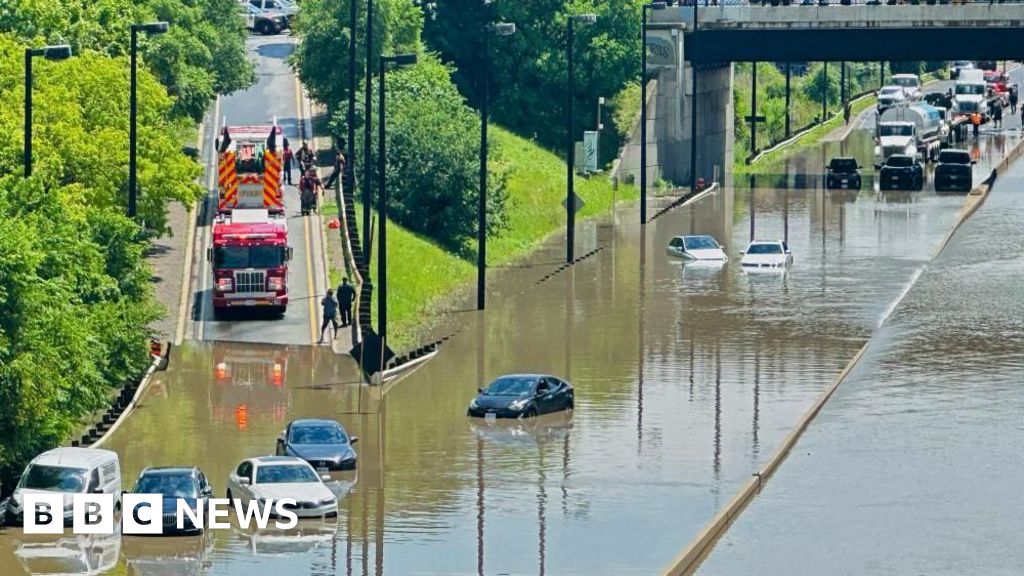Record rainfall from three major storms has flooded parts of Toronto, knocking out power and stranding drivers on major highways that cut through the city.
Environment Canada reported that Toronto received nearly 100 millimeters (4 inches) of rain on Tuesday, surpassing the city’s single-day rainfall record set in 1941.
Pictures and videos showed severe flooding across the city, with cars nearly submerged and water pouring down the stairs of Union Station.
According to Toronto Hydro, the storm left more than 167,000 customers without power.
Several flights from Billy Bishop Airport in the Toronto Islands on Lake Ontario were also delayed or canceled.
Don River Valley Drive, a major highway adjacent to the Don River, was blocked by flooding in both directions. Ontario Highway 410 is also closed, and police don’t expect it to reopen while crews work to clean up the area.
Authorities said they had rescued at least 14 people, including one who had to be rescued from the roof of a car.
The Toronto Fire Department received numerous calls from people trapped in elevators after a large swath of downtown Toronto lost power during business hours.
Meteorologists said Tuesday’s record rainfall was caused by three consecutive storms that hit the city.
“Due to the thunderstorms and the impact of the system, the rainfall in three hours was 25 per cent more than normal for the entire month of July,” meteorologist Dave Phillips told local news station CP24.
The Toronto and Region Conservation Authority warns that areas of the city close to shorelines, rivers and streams are particularly vulnerable to flooding. Toronto has more than a dozen rivers and streams, making it vulnerable to rising water levels.
Toronto Mayor Olivia Chow said she didn’t know why the flood-prone Don Valley Parkway wasn’t closed earlier in the day.
She added that the city was “investing massively” in cleanup efforts to ensure similar flooding does not occur in the future.
In July 2013, Toronto was hit by a severe and costly storm that left at least 300,000 people without power and more than 1,000 passengers who needed to be rescued from flooded trains.

